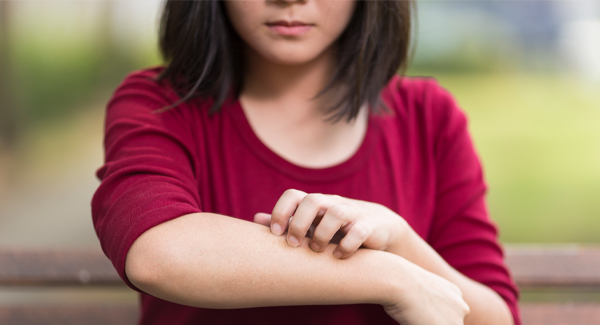Psoriatic Arthritis Self-Care Tips
Check out these self-care tips to manage your psoriatic arthritis and reduce flares.
1. Psoriatic Arthritis Self-Care Tips
Psoriatic arthritis can affect many aspects of your health — sometimes all at once. While effective medical treatments are available, much of the management of PsA is focused on self-care to prevent and treat flares.
2. Get Moving
Getting regular exercise — 30 minutes, five times a week — has several benefits. It’ll help you maintain a healthy weight, keep extra pressure off painful joints, keep your joints flexible and relieve stress. Talk to a certified fitness expert or physical therapist to help you get started.
3. Get Proper Nutrition
A healthy, balanced diet — one rich in fresh foods like fruits and vegetables and low in sugar, fat and salt — can help you boost your overall health and control your weight. Eating too many unhealthy foods may increase feelings of fatigue and sluggishness.
4. Limit Alcohol
Drinking too much alcohol can interfere with medications and increase the side effects of some drugs. Ask your doctor if it is safe to drink alcohol with your psoriatic arthritis treatments.
5. Quit Smoking
In a 2014 study published in Annals of the Rheumatic Diseases, researchers found that compared with non-smoking psoriatic arthritis patients, smoking PsA patients had worse self-reported disease. Smokers were also less likely to stick with their treatment plan and had a poorer response to treatment.
6. Manage Stress
Out-of-control stress can worsen flares and make it harder to manage daily activities. Meditating, listening to soothing music, walking, joining a support group and engaging in a therapeutic exercise — such as yoga or tai chi — can help reduce stress.
7. Protect Your Skin
Use creams, ointments or lotions containing aloe vera, jojoba or capsaicin to ease pain and itching. Take short, warm (not hot) baths using oilated oatmeal, bath oil, Dead Sea or Epsom salts to soothe skin. Make a habit of applying moisturizers following daily showers or baths, and after swimming. Guard against sunburn by wearing hats and using broad spectrum (UVA and UVB), water-resistant sunscreen with an SPF of 30 or higher.
8. Wash and Dress With Care
Wash clothes with fragrance-free detergent and fabric softeners to reduce risk of skin reactions. Choose clothing that is loose-fitting to avoid scratching scaly areas of skin. Items made of natural, soft fibers like cotton may be less irritating to skin and cooler in warm months.
9. Use Heat and Cold Therapy
Heat and cold therapy can be a regular part of your treatment regimen. Heat wraps improve blood circulation and help reduce joint stiffness and muscle spasms. Apply cold packs to your aching, swollen joints and burning skin. Cold helps reduce swelling by constricting blood vessels in affected areas.
10. Care for Your Hands and Feet
Keep your nails trimmed short to avoid risk of injury. Extra care should be taken with manicure and pedicure instruments, whether at home or in a salon. Wear gloves when working with your hands and choose shoes that won’t irritate swollen toes.
11. Attend to Your Emotional Well-Being
Try to stay active, even if you don’t feel up to it. Getting out can distract you from your pain and fatigue. If you don’t feel well enough to venture out, call or text a friend to stay connected. Keep a journal to express your emotions, and record your symptoms so you can understand your limitations and work around them. Or, find a psychologist who works with people who have chronic conditions.
Hello,
Diagnosed With Psoriatic Arthritis?
Get the latest news and tips about living with Psoriatic Arthritis in the Living Your Yes! e-newsletter.



